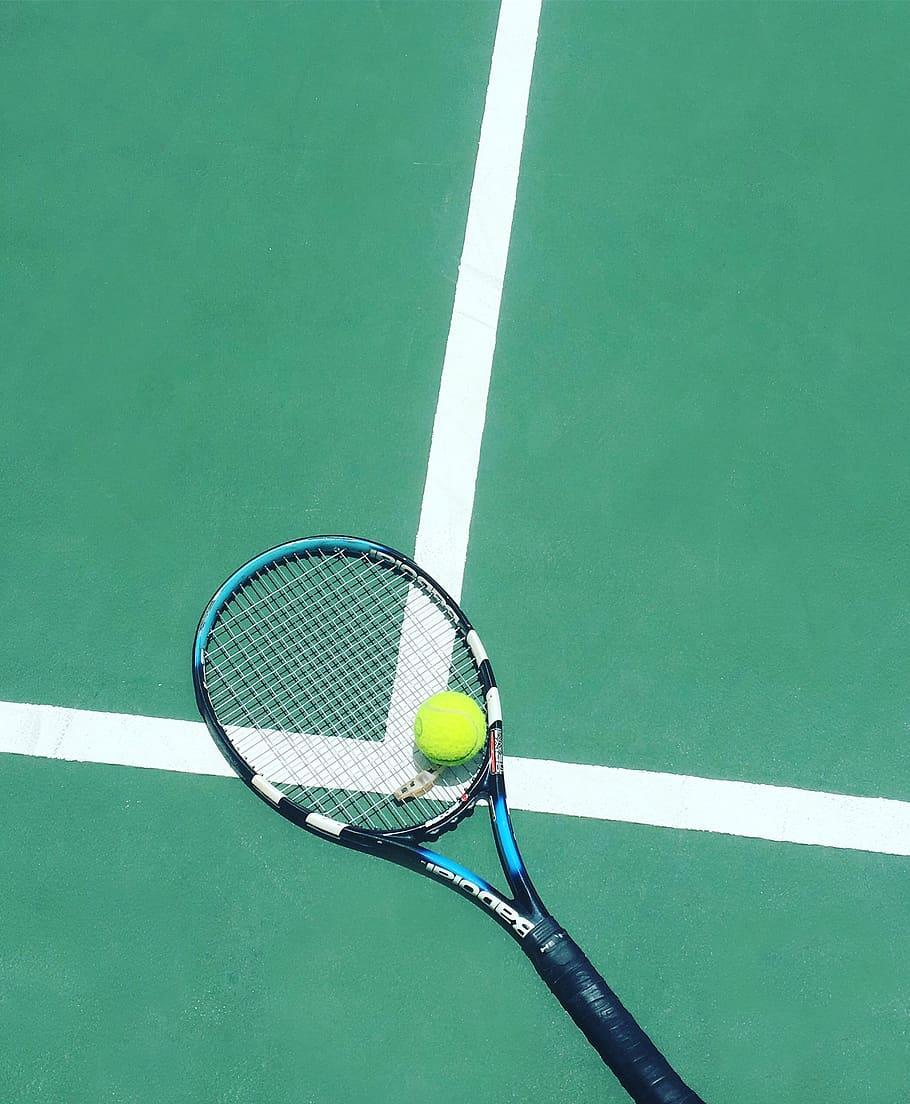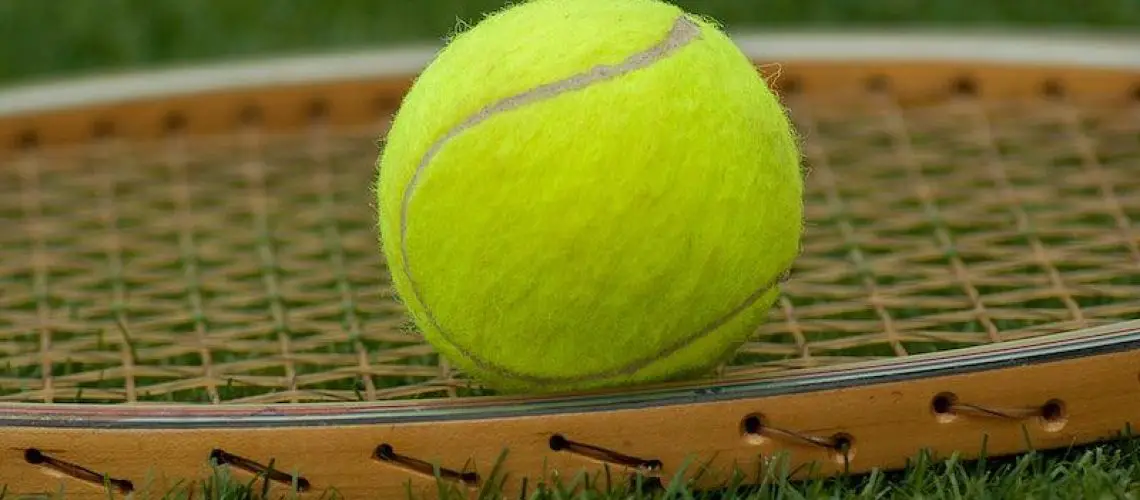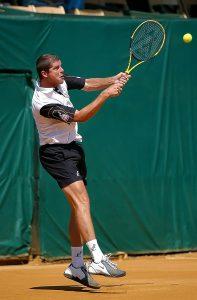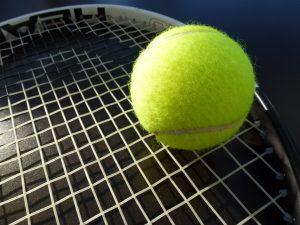We may earn money or products from the companies mentioned in this post.
Introduction to Tennis Ball Storage

When it comes to playing tennis, having fresh and bouncy balls can make a world of difference in your game But did you know that proper storage is crucial in maintaining the quality and longevity of your tennis balls? In this article, we will explore the importance of proper tennis ball storage and debunk some common misconceptions surrounding it
The Importance of Proper Storage
Tennis balls are not just rubbery spheres; they are complex structures designed to provide optimal performance on the court By storing them correctly, you can extend their lifespan and ensure they maintain their bounce and grip for longer periods
1 Extending the Life of Tennis Balls
Proper storage techniques can significantly prolong the life of your tennis balls One common misconception is that keeping them in a pressurized container or canister is enough to maintain their freshness While this may help initially, over time, pressure fluctuations and exposure to air can cause the internal gases within the ball to escape, resulting in loss of bounce
A more effective approach is to store your tennis balls in a cool and dry place, away from direct sunlight or extreme temperature changes This helps prevent premature aging caused by heat exposure or moisture absorption Additionally, using airtight containers or resealable bags can further protect them from environmental factors
2 Maintaining Optimal Performance
Tennis balls lose their optimal performance characteristics over time due to wear and tear during play However, proper storage practices can slow down this process and keep your balls performing at their best for longer
Avoid leaving your tennis balls on hard surfaces for extended periods as this can compress the felt covering and affect their overall performance Instead, consider storing them on softer surfaces like towels or in specialized ball hoppers designed to prevent unnecessary pressure on the balls
Common Misconceptions about Tennis Ball Storage
There are several misconceptions when it comes to storing tennis balls that can lead to subpar performance and premature deterioration Let’s debunk some of these myths:
1 Freezing Tennis Balls
Contrary to popular belief, freezing tennis balls does not rejuvenate them While cold temperatures may temporarily tighten the internal gases, the subsequent thawing process can cause moisture buildup inside the ball, leading to decreased bounce and performance
2 Microwave Rejuvenation
The idea of using a microwave to revitalize old tennis balls is another myth that should be avoided at all costs Microwaving a tennis ball can cause it to explode due to rapid expansion of trapped gases, posing a safety risk and rendering the ball unusable
In conclusion, proper storage is vital for preserving the quality and longevity of your tennis balls By following recommended techniques such as storing them in a cool and dry place and avoiding common misconceptions like freezing or microwaving, you can ensure that your tennis balls stay fresh, bouncy, and ready for action whenever you hit the court
Factors affecting the lifespan and performance of tennis balls

Tennis balls are not just round objects used for hitting back and forth during a match They are engineered to perform at their best, providing optimal bounce and feel However, several factors can impact their lifespan and overall performance
Exposure to air and humidity
When it comes to preserving the freshness of tennis balls, pressurized cans play a crucial role These cans are designed to maintain the internal pressure of the balls, preventing air from seeping in Without this pressurization, tennis balls would quickly lose their bounce and become flat
Humidity is another element that significantly affects the performance of tennis balls on the court When exposed to high levels of humidity, tennis balls absorb moisture from the air, causing them to become heavier and softer This alters their bounce characteristics and makes them less lively during gameplay
Temperature fluctuations
The temperature surrounding tennis balls also has a direct impact on their internal pressure and overall bounce quality Extreme heat can cause the gas inside the ball to expand, leading to increased pressure On the other hand, cold temperatures can cause contraction of gases within the ball’s core, resulting in decreased pressure
To ensure optimal performance and longevity of tennis balls, it is essential to store them within an ideal temperature range Ideally, they should be kept at room temperature or slightly cooler conditions (around 68-72°F or 20-22°C). Storing them in extreme heat or cold environments can affect both their durability and playing characteristics
Methods and Best Practices for Storing Tennis Balls

Storing New, Unused Tennis Balls
When it comes to storing new, unused tennis balls, one of the most effective methods is to keep them in their original packaging, typically a pressurized can This has several advantages, such as maintaining the pressure within the balls and preventing exposure to external factors that could affect their performance However, it’s important to note that this method does have its limitations The cans can be quite bulky and may take up valuable space in your tennis bag or storage area Additionally, accessing individual balls can be a bit cumbersome when they are stored in the original packaging
Storing Used Tennis Balls During Short Breaks
During short breaks between play or practice sessions, it’s crucial to store used tennis balls properly to ensure their longevity and performance On-court storage methods like ball hoppers, carts, or bags are ideal for keeping your used tennis balls organized and easily accessible These tools not only help you keep track of your balls but also make it convenient to transport them from one location to another Furthermore, minimizing direct sunlight exposure is essential as excessive heat can cause the rubber in the balls to deteriorate more quickly
Storing Used Tennis Balls Long-Term
If you’re looking for long-term storage solutions for used tennis balls, re-pressurizing containers or devices are worth considering These innovative options are available in the market and help maintain the pressure within the balls over an extended period They provide a practical solution for avid players who want to preserve their used tennis balls’ quality between matches or practice sessions However, it’s important to weigh the pros and cons of these alternatives compared to traditional storage methods before making a decision
Common Questions Regarding Tennis Ball Storage

When it comes to tennis ball storage, there are several common questions that arise Let’s explore some of these questions and provide insightful answers to help you better understand the best practices for storing your tennis balls
How Long Can You Store New, Unused Tennis Balls?
1 Factors Affecting Shelf-Life
The shelf-life of new, unused tennis balls can vary depending on a few factors One important factor is the type of tennis ball you have Different brands and models may have different durability levels and shelf-life expectations
Additionally, environmental conditions play a role in determining how long you can store new tennis balls Exposure to extreme temperatures, humidity, and direct sunlight can accelerate the deterioration process
2 Tips for Maximizing Longevity
To maximize the longevity of your new tennis balls, it’s essential to store them properly Keeping them in a cool and dry place away from direct sunlight is crucial Additionally, avoid storing them in places with high humidity or fluctuating temperatures
Using airtight containers or resealable bags can also help maintain the integrity of the balls by preventing moisture absorption
How Do You Know When It’s Time to Replace Your Old, Used Tennis Balls?
1 Signs Indicating Loss of Performance
Over time, tennis balls lose their performance capabilities due to wear and tear Some signs indicating that it’s time to replace your old tennis balls include decreased bounce height, reduced felt grip on the surface, and loss of overall responsiveness during gameplay
2 Bouncing Test for Assessing Usability
If you’re unsure whether your old tennis balls still have some life left in them, you can conduct a simple bouncing test Drop the ball from a reasonable height and observe how it bounces If it fails to bounce well or bounces unevenly, it’s likely time to retire those balls
Can You Rejuvenate Flat/Dead Tennis Balls Through Proper Storage Techniques?
While proper storage techniques can help maintain the quality of tennis balls, they cannot fully rejuvenate flat or dead balls Once a tennis ball loses its internal pressure, restoring its original performance is challenging
– Exploring the Effectiveness of Re-pressurizing Devices and DIY Solutions
There are devices available on the market that claim to re-pressurize tennis balls by injecting air into them However, their effectiveness varies, and results may not always be satisfactory
Some players have also experimented with DIY solutions like freezing or heating tennis balls to potentially restore their bounce While these methods may provide temporary relief, they are not long-term solutions
Is It Environmentally Friendly to Store Tennis Balls Long-Term?
1 Proper Disposal Methods for Old Tennis Balls
When it comes time to dispose of old tennis balls, it’s important to do so in an environmentally friendly manner Rather than throwing them in the regular trash bin where they will end up in landfills, consider recycling options or repurposing them
2 Alternative Uses and Recycling Options for Tennis Balls
Tennis balls can find new life beyond the court They can be used as effective tools for massage therapy, chair leg protectors, or even as dog toys (with supervision). Additionally, some organizations accept donated tennis balls for use in schools or community programs
Overall, understanding how to store and manage your tennis balls properly will help extend their shelf-life and ensure that you can enjoy optimal performance for as long as possible
Useful Links

Do Sealed Tennis Balls Go Bad?
How can I make tennis balls last longer?
Tennis Ball Pressuriser Tube
How can I make tennis balls last longer? – stalbanstennis.co.uk
Why Do They Keep Tennis Balls In The Fridge?
Tennis Ball Saver
Should I store already opened tennis balls in the cans they …
Wilson’s plastic-free tennis ball packaging
House M.D. Oversized Tennis Ball
Why Are Tennis Balls Pressurized? Professionals Advice
Tennis Ball Buying Guide
Tennis Balls
Store Your Shoes Using Tennis Balls!
Pressureless Tennis Balls
Say Goodbye to Dead Tennis Balls Forever with This Simple …
11 Smart Uses for Old Tennis Balls | HowStuffWorks
What is a Lifetime Supply of Tennis Balls?
Why Do They Keep Tennis Balls in The Fridge?
Store Your Shoes Using Tennis Balls!





